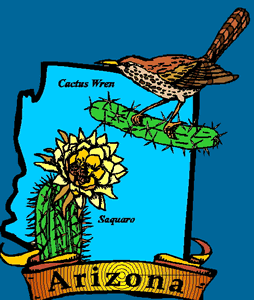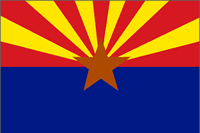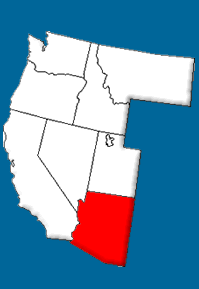 History:
The first white man to enter the Arizona region was a Franciscan friar, Marcos de Niza, who passed through the San Pedro Valley on 1539. He was searching for the great wealth of the Seven Cities of Cibola. One year later, Francisco Vasquez del Coronado led a group of explorers from Mexico in a search for these legendary cities of gold. His expedition visited several Indian villages and reached as far as the Grand Canyon.
Despite these early explorations, the Spanish were more interested in colonizing New Mexico and largely ignored the area. It was not until the late 16th century that the Roman Catholic Church began sending priests to the region for the purpose of establishing missions.
Father Eusebio Kino, a Jesuit priest, came to Arizona in 1692 and traveled as far north as present day Fairbank. He explored the region extensively and founded 24 missions throughout Arizona including Guevavi (1692), Tumacacori (1696), and San Xavier del Bac (1700).
Spanish troops established the first white settlement in Arizona in 1752 at Tubac. A Spanish fort was built at Tucson in 1776. The fort was constructed with thick adobe walls to protect soldiers and their families from the Apache Indians who roamed the area.
After the Mexican War for Independence from Spain (1810-1821), the Arizona region came under Mexican control. There were few settlers during this period of time, but American and French trappers explored the area in search of furs.
U.S. troops took control of the region in 1846 when Mexico and the United States went to war. Two years later, the Treaty of Guadalupe Hidalgo ended the conflict. The Treaty gave the United States possession of New Mexico Territory, which included the portion of Arizona north of the Gila River. In 1853, the United States acquired the region between the Gila River and the southern boundary of Arizona in the Gadsden Purchase.
During the 1850s, settlers in the area asked Congress to create an Arizona Territory, but their requests were denied. In 1861, at the outbreak of the Civil War, the Arizona region became part of the Confederacy. Many Arizona settlers had come from the South and were sympathetic to the Confederate cause.
Only one major Civil War battle was fought in Arizona. In 1862, Confederate troops were defeated at the Battle of Picacho Pass northwest of Tucson. One year later, the United States Congress created the Arizona Territory. John N. Goodwin took control of the area as Arizona's first governor on December 27, 1863. His headquarters were at the temporary capital of Fort Whipple. The first permanent capital was established at Prescott in 1865. In 1867 it was moved to Tucson, then back to Prescott in 1877, and finally to Phoenix in 1889.
Settlers in Arizona Territory lived in constant fear of attack by bands of Apache Indians. The Apaches were led by chiefs such as Geronimo and Cochise. They conducted raids against ranches and settlements throughout the southwest, but in 1886 Geronimo finally surrendered to federal troops.
During the Civil War, when Union soldiers left the territory to fight in the East, settlement of the Arizona Territory was nearly abandoned. But after the war, great progress was made. The Homestead Act of 1862, the Desert Land Act of 1877, and the Carey Land Act of 1894 turned land over to settlers, requiring that they develop it. Irrigated farms and cattle ranches were established. Miners came to the area for the rich deposits of gold, silver and copper. By 1877, the Southern Pacific Railroad had made its way into the territory from California.
Movement toward statehood began as early as 1890s. In the early 1900s, Congress proposed the formation of one large state from New Mexico and Arizona territories. Arizona voters turned it down. The territory drew up a constitution and applied for statehood in 1910. But President Taft would not sign the bill because of a clause in the proposed constitution that permitted judicial recall - a process that allowed voters to remove judges from office. The clause was removed and Arizona became the 48th state on February 14, 1912. After its admission to the Union, Arizona reinstated the controversial clause. |









